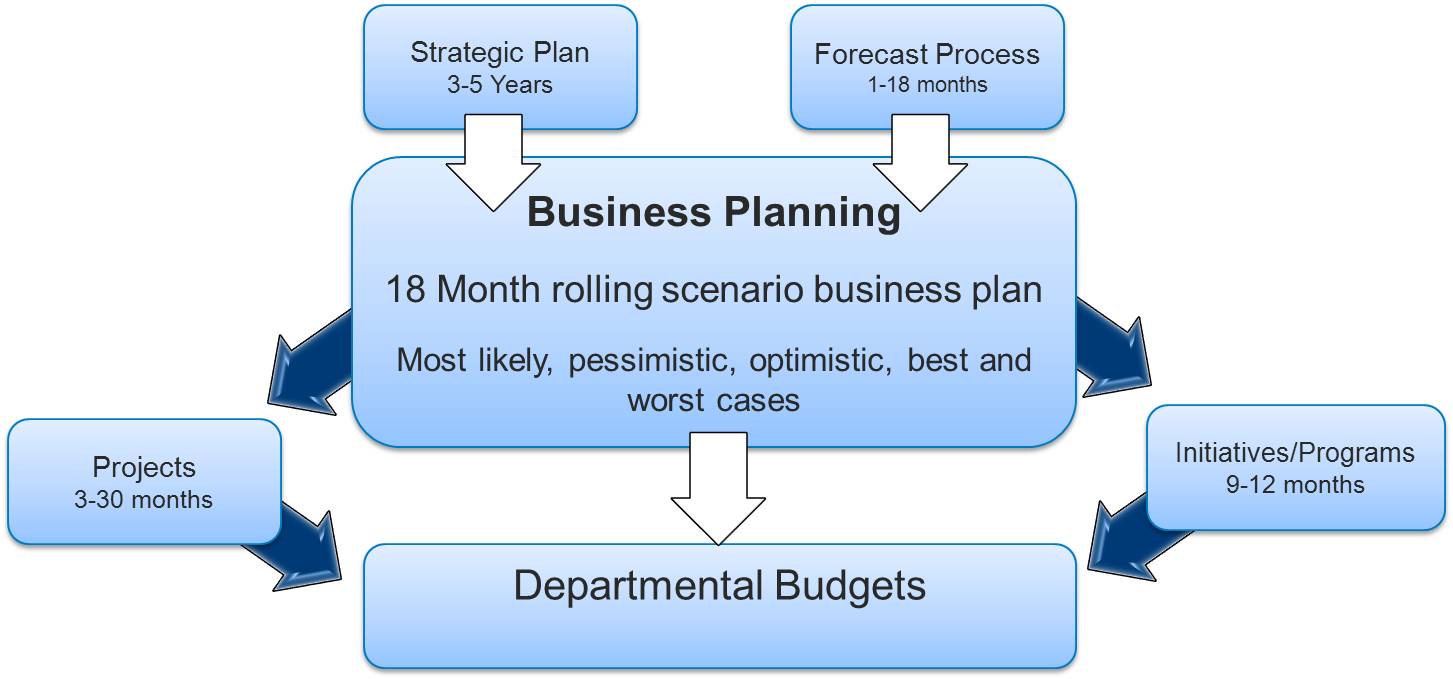How do you know when you’ve given a great presentation? When someone remembers it a year later and writes a blog post about it. That great presentation in this case was given by Erik DaRosa, Director of Global FP&A for Avon, who spoke at the IE Group’s Financial Forecasting Conference this time last year in Boston. I’ll be chairing that same event again this year (link to the event here: (http://www.theiegroup.com/FPA_Boston/Overview.html ) and as I was preparing for my upcoming role as master of ceremonies I was reminded of Erik’s brilliant session a year ago.
Erik’s opening premise was that when it comes to forecasting, you are guaranteed to be wrong. It might be by a little, it might be by a lot, it might be over or it might be under, but the likelihood of nailing a forecast dead center is pretty much zero. That’s not too bad by itself, but it’s the next step, variance reporting, that completely warps the entire business forecasting process. Forecasts are going to be wrong; incorrect forecasts generate variances; and variances need to be explained. Or as Erik put it: Finance is ALWAYS wrong and spends the rest of the month explaining why. It’s as if there is a manufacturing process in place whose output is variances, and it exists in order to create more work for financial analysts; work that adds NO value to the organization.
What Erik did next in his role as head of global FP&A came in two steps. The first was to put his foot down and simply say: “We’re not going to do this anymore!” Step two was to change the behavior and transform FP&A’s role into one defined as “business partner”, a role that performed only activities that added value to the lines of business they were supporting, and which therefore did NOT include forecast variance reporting.
Before we move on to exactly what Erik did do to transform the FP&A function, I want to examine how his aversion to forecast variance analysis fits into the financial planning scheme you’ve seen several times from me already.
Notice where Forecasting fits into the overall process – it is an INPUT to planning. Planning in turn drives budgeting, which by my definition is strictly a resource allocation process. And if you’ve been paying attention, my view of forecasting is that it is NOT a monolithic, single-sourced action (i.e. just from the field sales force), but is comprised of many separate forecasts coming from several different sources, covering different time horizons, and bringing with them their own unique perspective on what the various contributors think likely WILL happen to their particular domain.
By that definition, a forecast CANNOT be wrong because it was never meant to be RIGHT; it was meant to be one of many inputs into the planning process. The planning process then analyzes, aggregates and assimilates the various forecast sources into appropriate scenarios, and once a scenario is triggered, it in turn causes a reallocation of resources through an updated budget, all in alignment with strategy.
Getting back to Erik and his team, what came out of his transformation efforts included two features that, again, fit nicely into the overall FP&A structure that I have been championing for some time. These features are: the process is continuous, and the process is integrated.
Continuous. I don’t mean this in the sense that it takes 12 months to create a budget. No, I mean instead that it is continually gathering inputs, testing the markets, validating its assumptions, periodically recalibrating and making course corrections when required. The idea of the monthly forecast disappears and is replaced with the common sense approach that different time horizons and forecasting frequencies are associated with each different input source. Yes, finance will undoubtedly have something to say every 30 days after it closes the books, but the ERP and POS systems can respond to a changing environment weekly, daily or even hourly, whereas sales may have more of a quarterly window to changing customer activity, with marketing and R&D looking at even longer time horizons.
Integrated. You don’t forecast in a vacuum. You don’t forecast for the sake of forecasting and for the purpose of generating variances that need to be explained. You forecast as part of an overall performance management process that incorporates strategy, scenario planning, resource allocation, and of course, forecasting, for the sole purpose of improving financial, customer and operational results. Under this sort of perspective, forecasts can always be improved, but they are never considered ‘wrong’.
The key to transformation then, for finance, is in what value it can bring to the planning process. The business still has to execute, but for now that’s the business’ problem. FP&A adds value, and impacts results, not by justifying variances, but through the intelligence, experience and analysis it can bring to bear on through a continuous and integrated planning process.


3 Comments
Leo -- you might appreciate a great quote about forecasting from Dr. David Orrell (http://www.postpythagorean.com/bio.html), "...the aim is less to predict the future than to prepare for it."
I share your disdain for variance reporting, which is mostly an exercise in nonsense. I've been in an organization where, every Friday, managers were paraded before the executive committee to explain why they were up (or down) last week compared to the plan (or to prior week, or prior year). That was about as worthwhile as trying to explain why a coin toss landed heads or tails.
Perhaps business executives need to have a little more appreciation for random variation...
Pingback: Playing ‘Marco Polo’, and other Forecasting Approaches - Value Alley
Pingback: Finance in more than two dimensions - Value Alley